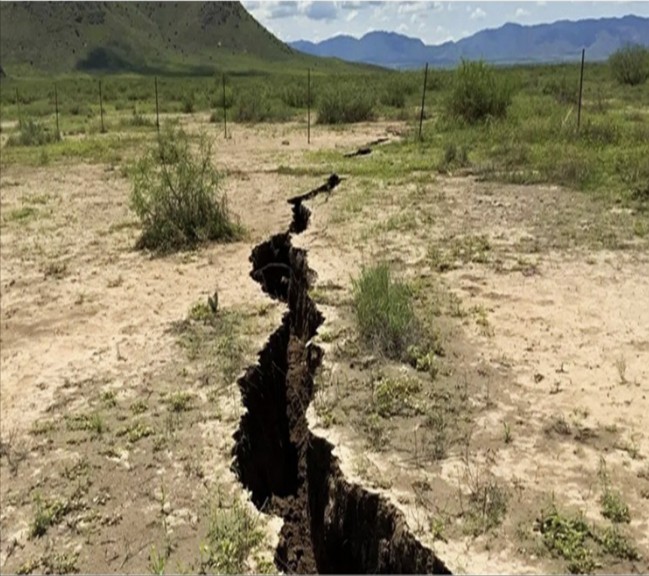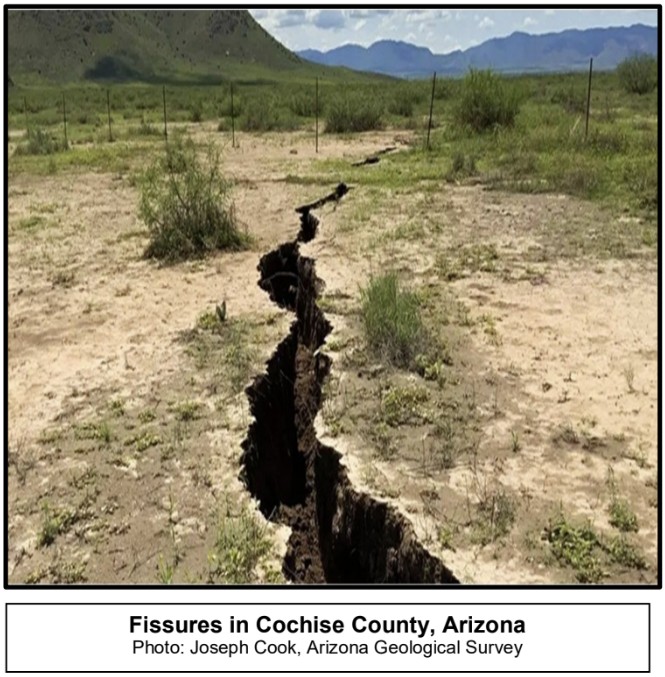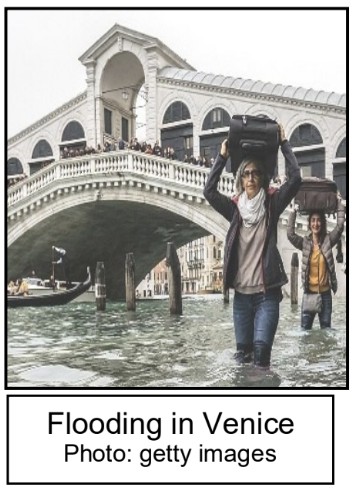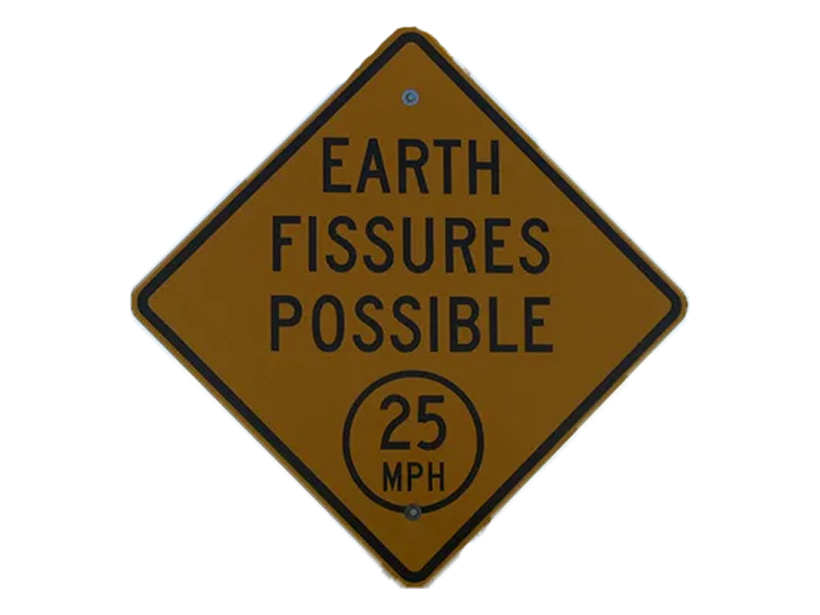March 5, 2025

Picture of the month prepared by Andrew Stone, Hydrogeologist, (andrewstone @ gmail.com)
The basic mechanism of ground surface subsidence is the compaction of sediments resulting from groundwater depletion in the aquifer(s) below. Aquifers with layers of fine-grained sediments are particularly vulnerable because they become compressible when dewatered by groundwater pumping. When water in the sediment pore spaces is removed, compaction may occur resulting in the clay layers occupying less space. Over time, and in places where there are thick aquifers with fine-grained layers, the compaction is transmitted upwards to the surface. Much of the damage from cracks and fissures on the surface to buildings, roads, canals, aqueducts, pipelines and well casing, results from uneven subsidence with differential vertical displacement causing sideways movements. Subsidence in coastal zones can greatly increase flooding risks. Pumping-related subsidence is not likely to occur in aquifers with mostly sandy sediments or in consolidated rock aquifers. It is the draining of water from saturated fine silt and clay layers that is the main subsidence culprit.

Groundwater-pumping-induced land subsidence is a worldwide phenomenon, not just in agricultural areas such as California’s Central Valley, but also in urban areas, for example, Mexico City, Mexico; Jakarta, Indonesia; Shanghai, China; Tehran, Iran; and Venice, Italy. The case of Venice serves to illustrate some of the cause and effect of pumping and the geological characteristics of aquifers where subsidence may occur.
Geologically, the 1,000-meter-thick layers of sediments beneath the Lagoon of Venice, where the City of Venice is situated, are Pleistocene-Holocene sequences of sands and silts deposited by rivers flowing southwards from the Alps. The original settlement of Venice was on small sandy islands in the lagoon surrounded by mud flats. Expansion of the city occurred by reclaiming and filling areas of the lagoon tidal flats.
During industrialization in the early 20th century, a manufacturing complex was built near Marghera on the edge of the Venice Lagoon. Groundwater pumping from the Quaternary aquifer to supply the industries resulted in subsidence extending beneath Venice City. Most pumping occurred between the 1930s and 1970s but subsidence continued even after pumping was curtailed. This anthropogenic-caused subsidence, added to rising sea levels and longer-term small increments of natural geologic subsidence has led to alarm and worldwide concern for the flood-compromised future of this famous heritage city.
Gravity-flow of water in the California Aqueduct is crucial to delivering water for irrigation in the Central Valley. However, according to the California Department of Water Resources, the volume of flow in the aqueduct, or hydraulic conveyance capacity, has been reduced by more than 40% because of subsidence from groundwater pumping and now requires a multi billion dollar solution.
According to the US Geological Survey, “…more than 80 percent of the identified subsidence in the USA has occurred because of exploitation of underground water, and the increasing development of land and water resources threatens to exacerbate existing land-subsidence problems and initiate new ones.”


More information:

